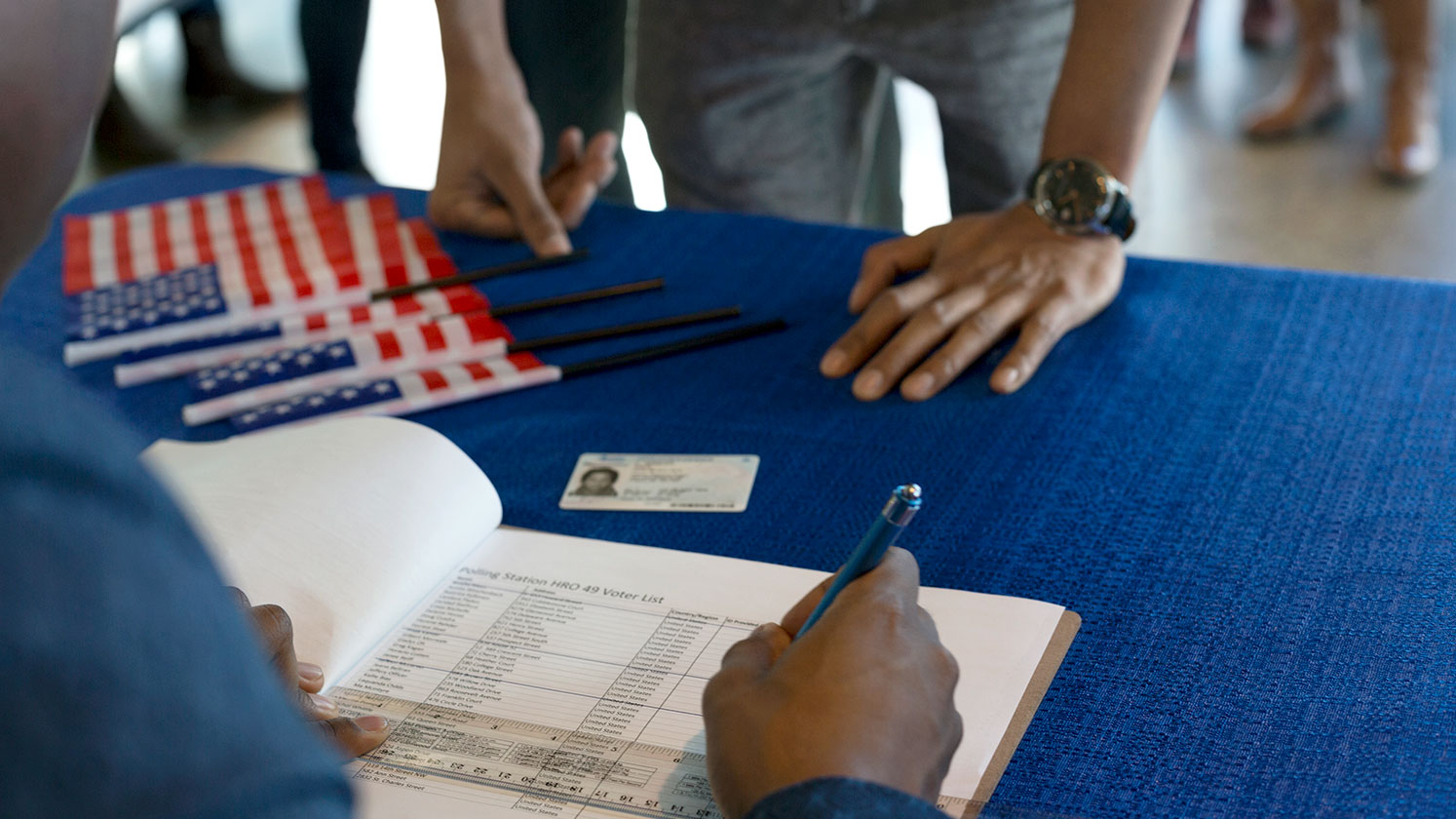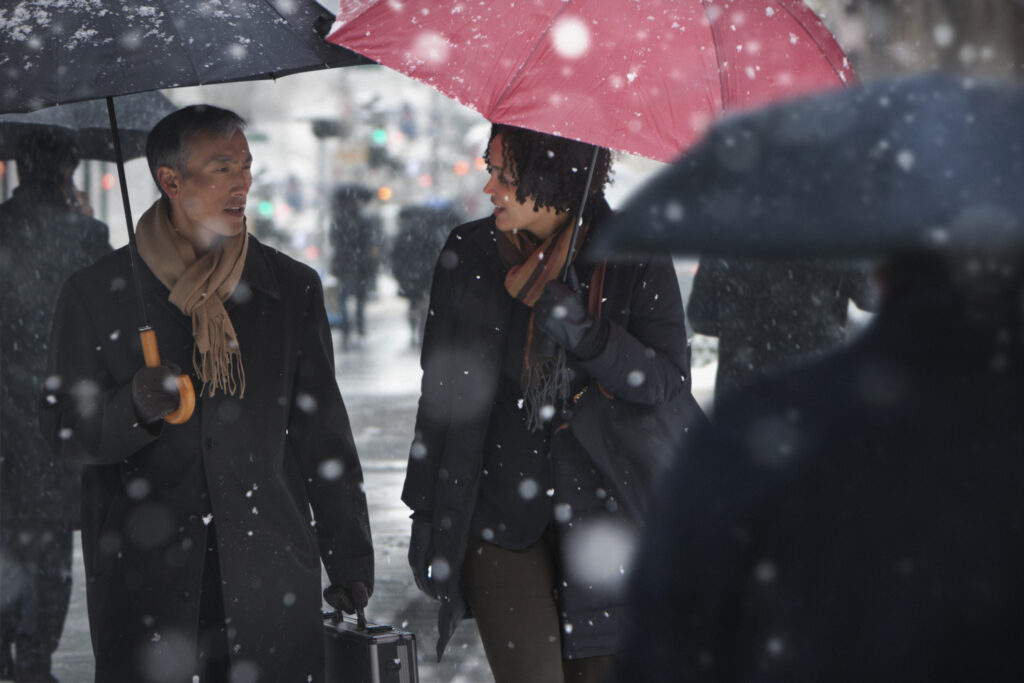Let’s be clear: the November elections aren’t being fought over the labor market. Midterm elections are typically more about how people feel about the President than the state of the economy, and this year looks to be no different. The labor market continues to improve for people of all political stripes—and especially for the least well-off—so pressing economic issues aren’t in the center ring. And it’s not as if the country lacks other divisive issues to fight over.
And yet, the labor market is hardly immune from politics. Attitudes about labor-market conditions and specific economic policies are soaked in partisanship. A new Indeed survey confirms that Republicans are substantially happier than Democrats about national economic conditions—and even more so about President Trump’s handling of the economy. But, when it comes to their own personal financial situations, there’s little difference between red and blue America.
Instead, the striking gap is between likely voters, who are doing far better in the labor market, and those less likely to vote next month. As a result, in addition to partisanship, voting patterns could help keep bold labor market ideas off the table.
Partisanship colors most opinions about labor-market conditions and policies
If you assume political views affect how people see the labor market, you’re on safe ground. In September, we surveyed 2000 American adults about how they see the job market, their political leanings and how likely they are to vote in the November midterms.
Republicans are more enthusiastic about the US economy than Democrats, including people who identify with or lean toward one of the two major parties. In fact, Republicans and Democrats seem to inhabit two different worlds. Nearly three-quarters of Republicans—73%—described national economic conditions as excellent or good, compared with just 43% of Democrats. This is consistent with the Republican jump and Democratic dip in economic confidence after the 2016 election.
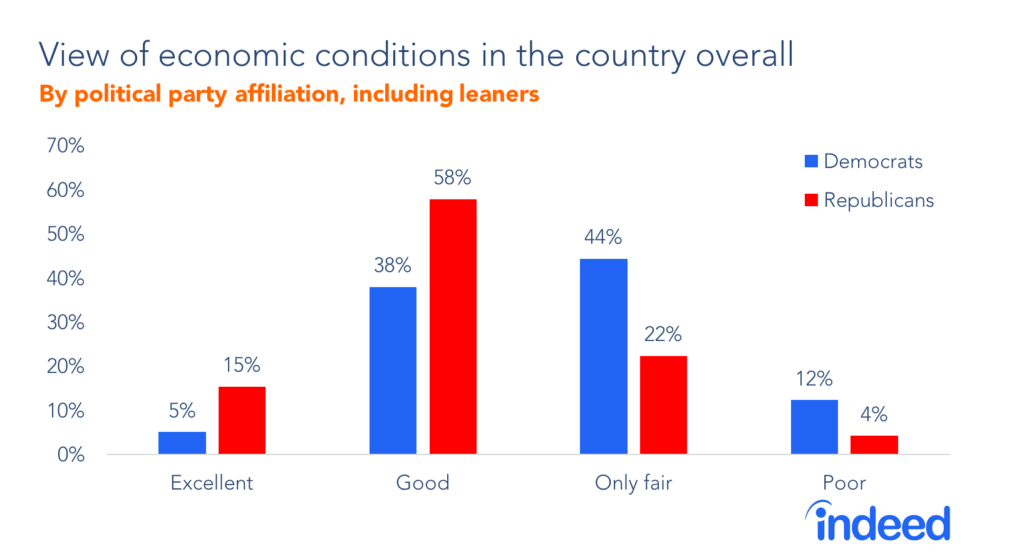
Approval of how Trump is handling the economy is even more skewed, with 85% approval among Republicans and just 21% among Democrats—an enormous 64-point gap. Democrats are more likely to disapprove strongly—58%—than Republicans are to approve strongly—46%—though more Democrats approve of Trump’s handling of the economy—21%—than Republicans disapprove—15%.
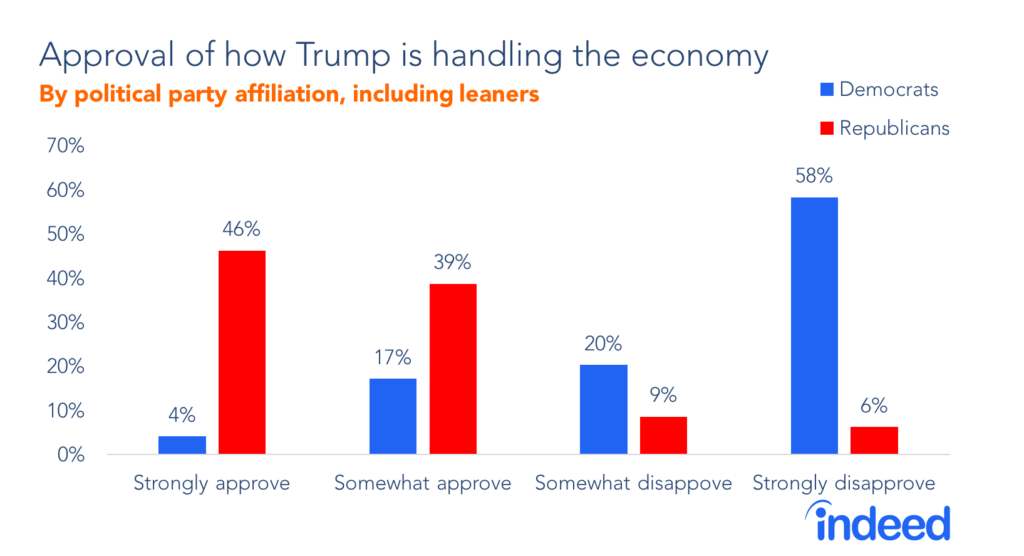
Labor-market partisanship extends to specific policy ideas and proposals. None of the 12 policies related to the labor market we asked about were thought to be a very good idea by majorities of both Democrats and Republicans. One policy idea—a jobs guarantee—came close, with 62% of Democrats and 48% of Republicans agreeing it’s a very good idea. But the appeal of the next four most popular ideas all skewed strongly toward Democrats, including higher minimum wage, universal healthcare, and free college, or strongly toward Republicans in the case of reduced illegal immigration.
One red (ahem) flag: the two least popular ideas overall—reduced legal immigration and higher tariffs on imports—strongly skewed toward Republican support. In the absence of a longer list of labor-market ideas with bipartisan popular support, it’s hard to see much change coming to policy in this area at the federal level, especially if the next Congress is more evenly divided politically than the current Congress.
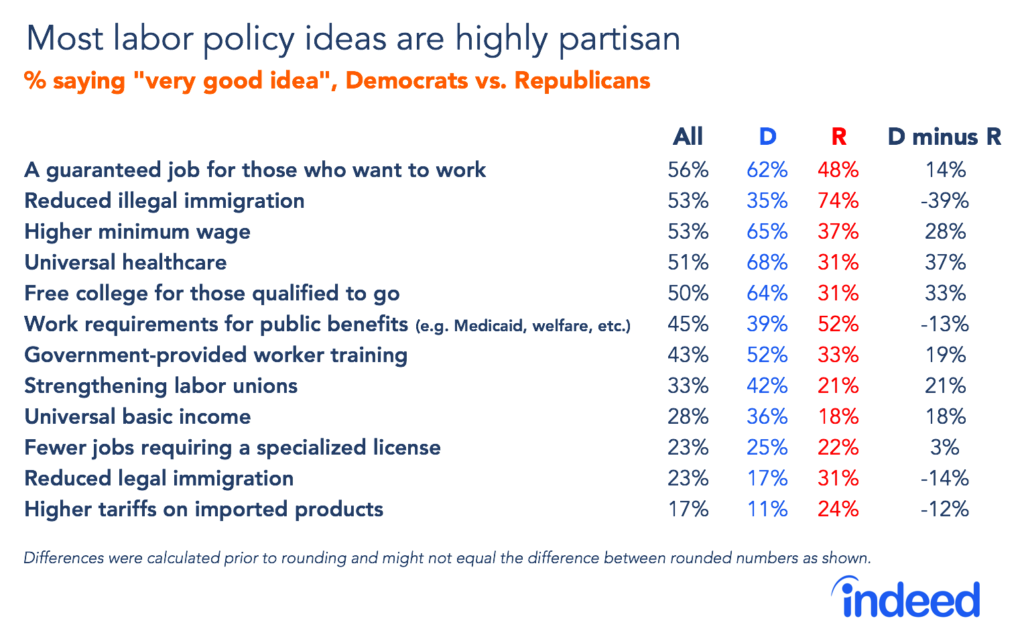
Where Democrats and Republicans agree
There’s one area where Democrats’ and Republicans’ views are more aligned—how they evaluate their own personal financial situations. True, Republicans are more upbeat about their own financial situations than Democrats, but the difference is small: 52% of Republicans and 46% of Democrats rated their own situations as excellent or good. That gap pales compared with the 30-point gap in excellent/good views for national economic conditions and the 64-point gap in approval of Trump’s handling of the economy.
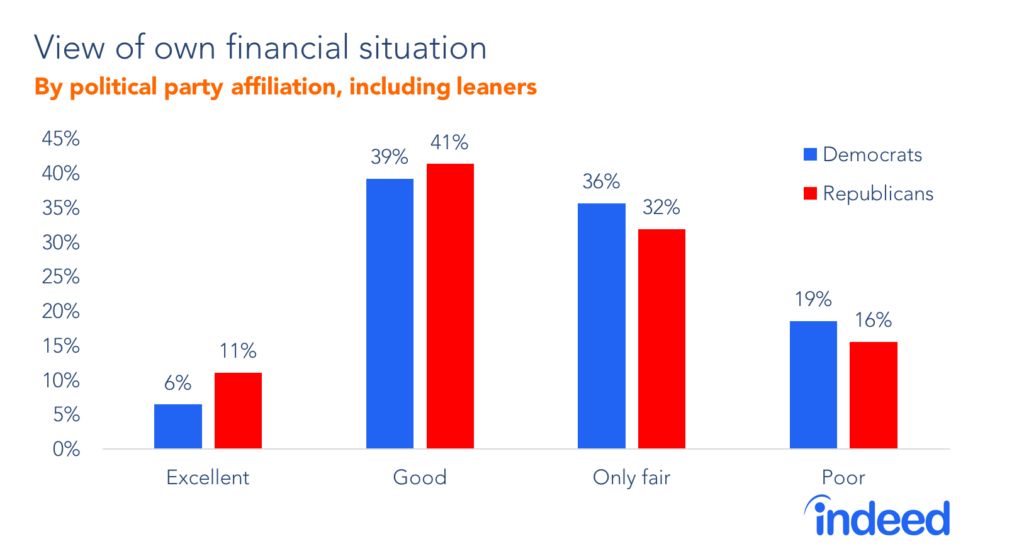
Republicans’ greater enthusiasm for their own financial situations might reflect broader confidence about the national economy and Trump, but could also be due to actual gaps in economic circumstances. The unemployment rate is lower for people who are likely to have supported Trump in 2016 than for those who probably supported Clinton. And job growth is slightly faster in red than in blue states. No partisan bias is necessary for Republicans to feel a bit better on average about their own personal financial situations than Democrats.
Partisanship also dissolves when it comes to the supposed job-killer people worry about most. The same majority of Democrats and Republicans—60%—think that robots, automation, and artificial intelligence will put many jobs at risk. Far fewer people think jobs are threatened by environmental regulations, legal immigration or trade with other countries. Even Republicans—who are more likely than Democrats to think these regulations, immigration, and trade hurt jobs—are much more concerned about the future effects of robots, automation and AI on jobs.
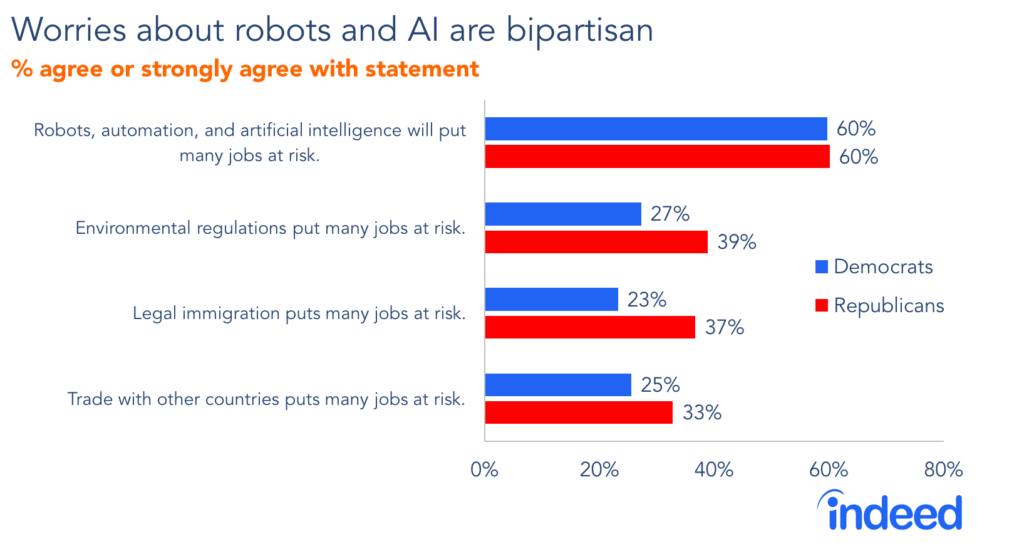
It may be that the effect of automation on jobs is too abstract, distant or uncertain for partisan differences to emerge — but the broad agreement between Republicans and Democrats may provide an opportunity to take policy action today on a rare issue of bipartisan concern.
Likely voters are doing better in the labor market than others
Partisanship is not the only reason why it’s hard to find common ground on the economy and carry out effective labor-market policies. Another factor is voter turnout, which is consistently lower in midterm than in presidential elections. Although enthusiasm for voting in this year’s midterms is higher than in several previous midterm elections, likely voters differ in important ways from people less likely to vote.
Among our survey respondents, 53% said they were extremely likely to vote in the November midterms, 17% said very likely, 14% said somewhat likely and 16% said not at all likely. Older and more highly educated adults were much more likely to say they would vote than younger and less educated adults—broadly speaking, the same pattern as among those who reported actually voting in 2014, the last midterm election. People who either approve or disapprove strongly of how Trump is handling the economy say they’re more likely to vote than people with milder views. Also, people who identify as either Democrat or Republican are more likely to vote than those who identify as independent.
Here’s what’s important about this: people who are extremely or very likely to vote have different labor-market experiences than people who are somewhat or not at all likely to vote. More than half—56%—of the more-likely voters view their own financial situations as excellent or good, compared with just 33% of the less-likely voters. That 23-point gap is much larger than the 7-point gap between Democrats and Republicans in viewing their own financial situations as excellent or good. In fact, that 23-point gap between likely and less-likely voters in how they view their own financial situations is not much narrower than the 30-point gap between Democrats and Republicans in how they view national economic conditions.
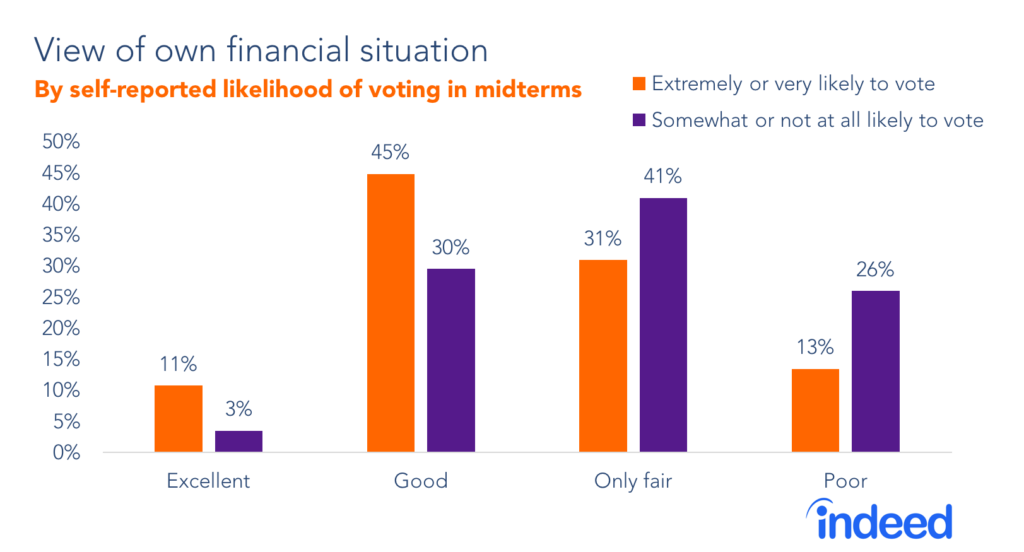
People less likely to vote stand out in other ways too. Among prime-working-age adults, they’re more likely to be out of work and looking than extremely/very likely voters. If employed, they’re also more likely to be dissatisfied with their jobs. Less-likely voters are also more skeptical than likelier voters that legal immigration, trade, environmental regulations, or robots, automation and artificial intelligence are good for the economy. Perhaps because they’re more wary of these forces, less-likely voters are more enthusiastic than likelier voters about a jobs guarantee.
Why does this matter? When campaigning and governing, politicians need to appeal to voters. Over time, public policies tend to reflect the interests and demands of those groups that are more likely to vote. For instance, look at tax breaks for homeowners, and Social Security and Medicare for seniors. Because likely voters are doing better and are more upbeat about the labor market than less-likely voters, economic policies that are responsive to voters could reflect too-rosy a view of the labor market. The needs of those faring worse in the labor market could get overlooked.
Methodology
This blog post is based on an online survey of 2,000 US adults age 18+ conducted September 19-23, 2018, for Indeed by Decipher/FocusVision. Weights were applied in order to match respondent distributions across age, educational attainment, race/ethnicity, and sex with the 2018 Current Population Survey’s Annual Social and Economic Supplement.
Throughout this analysis, Democrats and Republicans include both people who identified with that political party, as well as independents and others who lean more toward that party.
The differences between likelier and less-likely voters in attitudes toward specific policies mentioned in the blog post are statistically significant even when controlling for partisan leaning.
Some questions follow the language used by the Pew Research Center. However, our results should not be compared with Pew Research Center results for trending purposes.
All sums and differences are presented before rounding. Thus, reported sums and differences might not equal the sums and differences of reported rounded numbers.
